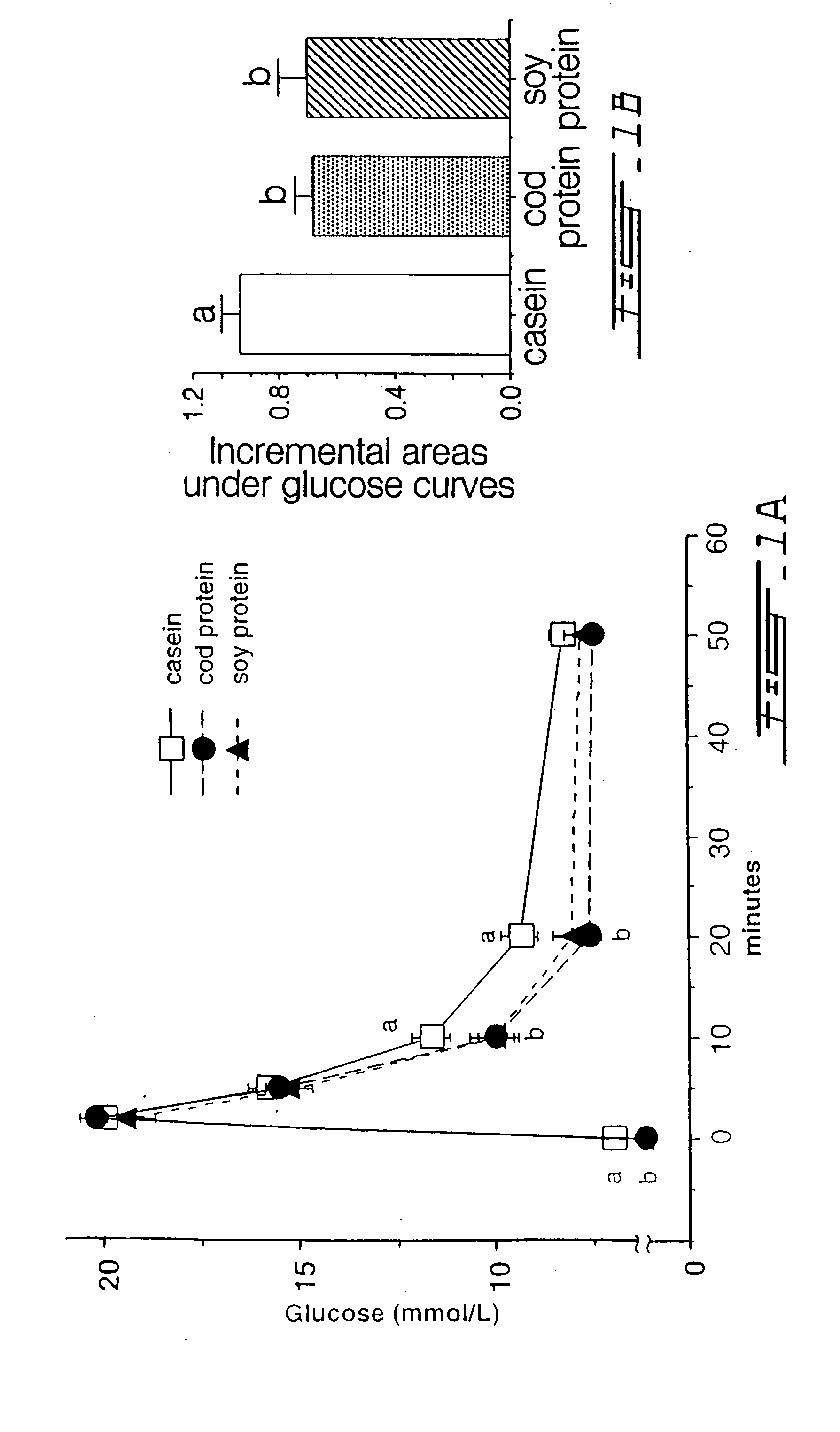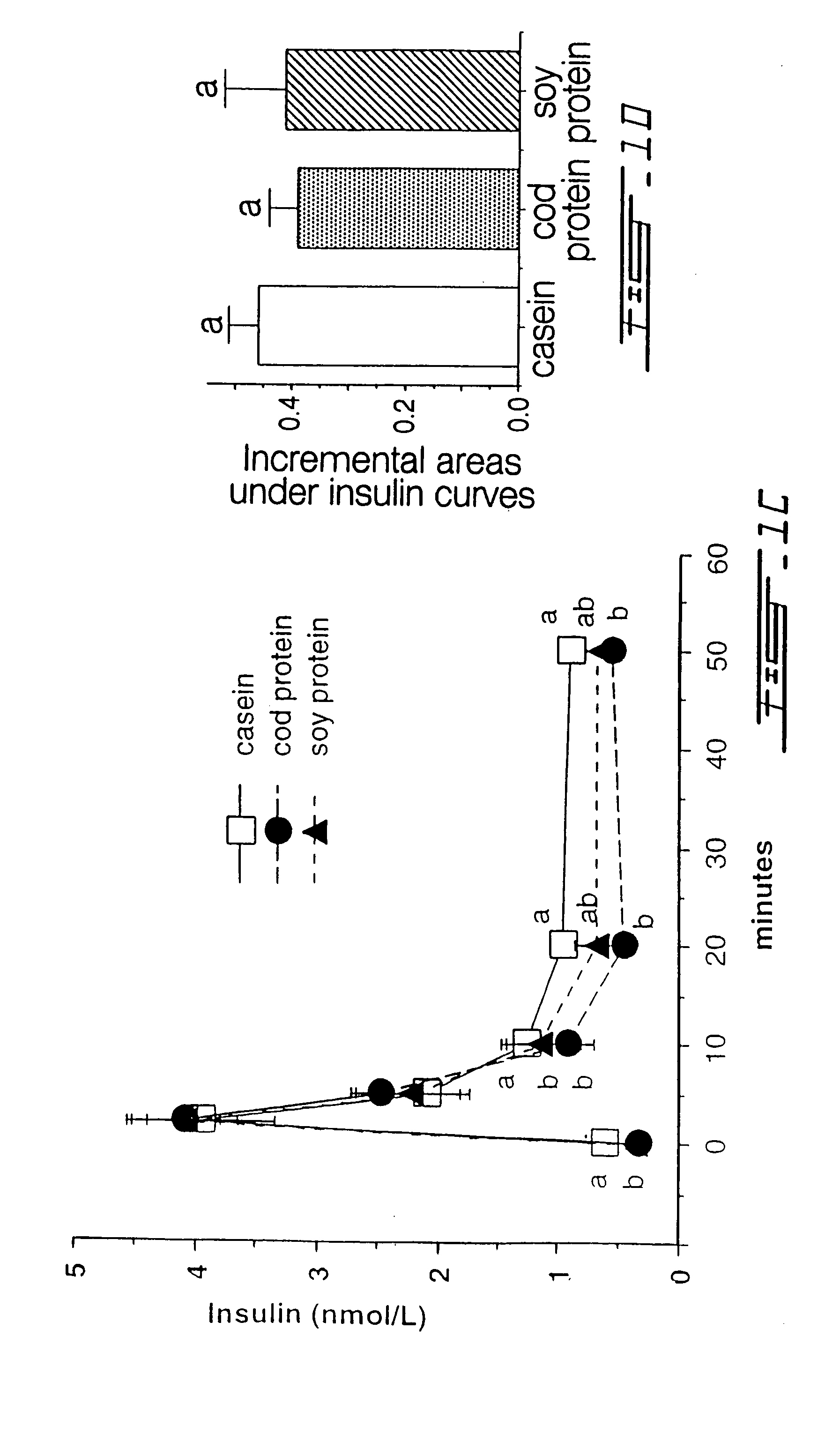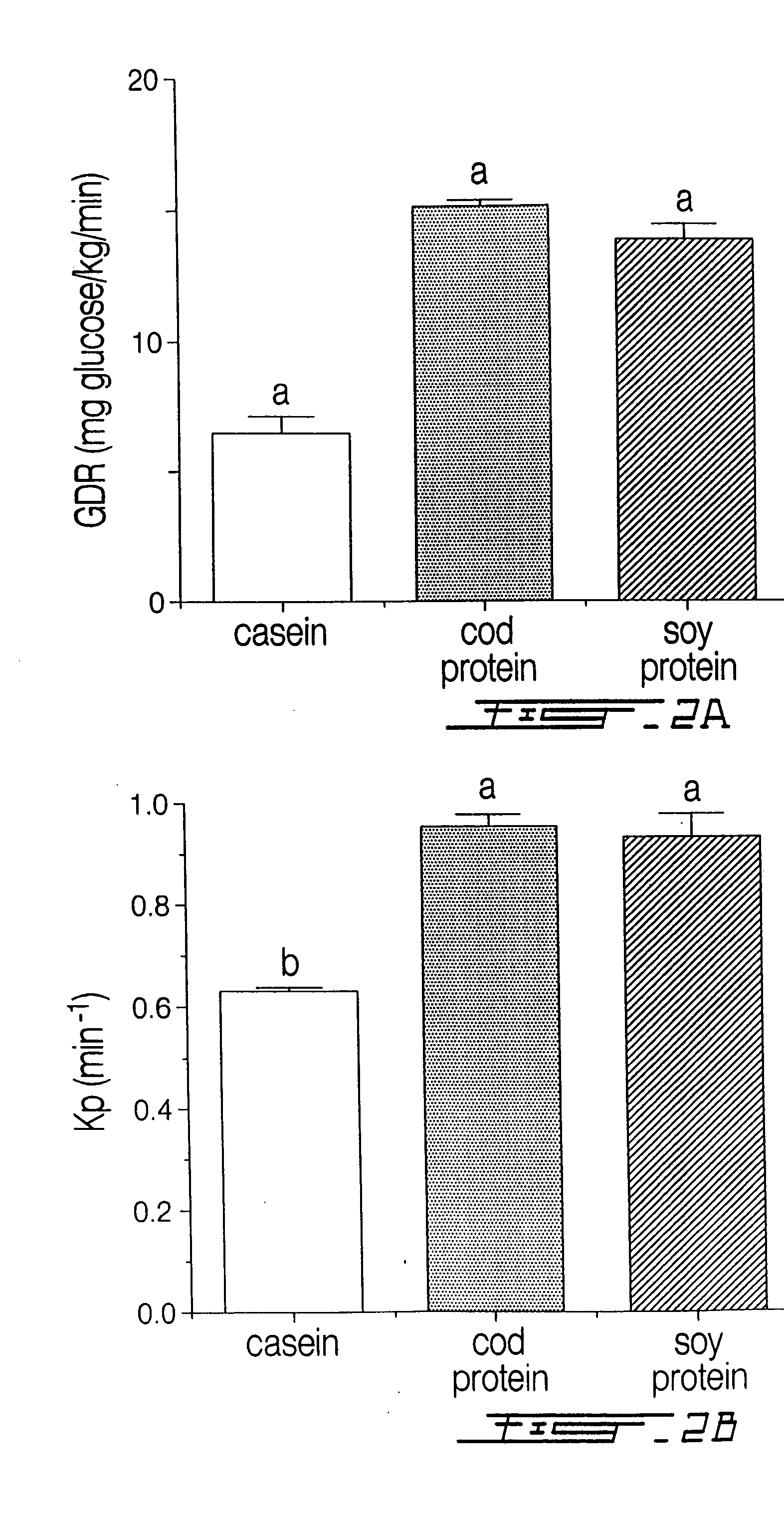Amino acids from fish and soy proteins improve insulin sensitivity
a technology of soy protein and amino acid, which is applied in the direction of peptide/protein ingredients, drug compositions, metabolic disorders, etc., can solve the problems that little is known about the effect of cod and soy protein on glucose tolerance, and achieve the effects of reducing the rate of glucose disappearance, and reducing the incremental area
- Summary
- Abstract
- Description
- Claims
- Application Information
AI Technical Summary
Benefits of technology
Problems solved by technology
Method used
Image
Examples
example 1
The Effects of Feeding Various Dietarv Proteins on Insulin Sensitivity and Glucose Tolerance in Rats
MATERIALS AND METHODS
[0030] Animals. Male Wistar rats (Charles River, St. Constant, QC, Canada) weighing 240 g on arrival were individually housed in wire-mesh cages in a temperature- and humidity-controlled room with a daily dephased 12:12-h light-dark cycle (lights on at 2200 to 1000). Upon arrival, all rats were fed a grounded nonpurified commercial diet (Purina rat chow; Ralston Purina, Lasalle, QC, Canada) for at least 6 days. At the end of this baseline period, rats were divided into three groups of the same average weights. Purified diets and tap water were provided ad libitum for 28 days. Food intake was estimated every day by subtracting the food spillage weight from the initial food weight, and body weight was measured weekly. The animal facilities met the guidelines of the Canadian Council on Animal Care, and the protocol was approved by the Animal Care Committee of Laval...
PUM
| Property | Measurement | Unit |
|---|---|---|
| pH | aaaaa | aaaaa |
| pH | aaaaa | aaaaa |
| pH | aaaaa | aaaaa |
Abstract
Description
Claims
Application Information
 Login to View More
Login to View More - R&D
- Intellectual Property
- Life Sciences
- Materials
- Tech Scout
- Unparalleled Data Quality
- Higher Quality Content
- 60% Fewer Hallucinations
Browse by: Latest US Patents, China's latest patents, Technical Efficacy Thesaurus, Application Domain, Technology Topic, Popular Technical Reports.
© 2025 PatSnap. All rights reserved.Legal|Privacy policy|Modern Slavery Act Transparency Statement|Sitemap|About US| Contact US: help@patsnap.com



